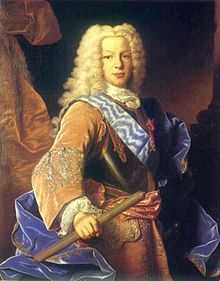Great Gypsy Round-up


The Great Gypsy Round-up (Spanish: Gran Redada de Gitanos), also known as the general imprisonment of the gypsies (prisión general de gitanos), was a raid authorized and organized by the Spanish Monarchy that led to the arrest of all gypsies (Romani) in the region, and their imprisonment in labor camps. The raid was approved by the King Ferdinand VI of Spain, and organized by his minister, the Marquis of Ensenada, and set in motion simultaneously across Spain on July 30, 1749.
Since a royal edict by Charles II in 1695, Spanish gypsies had been restricted to certain towns.[1] An official edict in 1717 restricted them to only 75 towns and districts, so that they would not be concentrated in any one region.
Organisation
The plans for the roundup were developed in secrecy. Among the first to draw up plans was the appointed Governor of the Council of Castile, Gaspar Vázquez Tablada, Bishop of Oviedo. It was later also supported by the opinion of the Jesuit Father Francisco Rávago, confessor to Ferdinand VI, whose reply about the morality of the roundup can be summarised in his commentary that: "The means proposed by the governor of the council to root out this bad race, which is hateful to God and pernicious to man, seem good to me. The king will be making a great gift to God, Our Lord, if he manages to get rid of these people."
The plan entailed sending troops to the towns with gypsy settlements, each carrying sealed set of instructions, which were only to be revealed to the commanders on a date just prior to the roundup in August. The gypsy settlements were to be surrounded, and all able-bodied adult gypsy males were internally deported to forced labor in the Naval arsenals or to specified mines, prisons, or factories. The women and children were forced into clothing manufacture. Those too ill to travel would remain in military custody until well enough to travel, or until they reached a "Christian death". The operation was to be funded by confiscated goods and homes of the gypsies.
The mechanics of the raid varied in efficiency from town to town. The roundup in Seville, where the city gates were closed by the encircling army to prevent escape of the target, created alarm in the general public, who was ignorant of the goals. Special edicts were obtained to prevent the use of churches as asylum. The definition of who exactly was a gypsy, proved to be difficult in many cases, and was prone to abuse. For example, Gypsies married to non-gypsies were often spared. Nomadic gypsies, already less frequent, proved difficult to roundup. Ultimately nearly 9-12 thousand gypsies were detained. The latter stages of transport and housing of the detainees proved less organized.
Reversal
As protests began to arise from different communities, the orders were repeatedly modified to permit the release of some gypsies, often creating confusion among the local military commanders. Gradually, further imprisonments became sporadic, and in 1763, those gypsies who still remained in forced labor were ordered to be released by the king, a process that took the better part of two years.
Epilogue
The Gran Redada can be viewed as one of the last attempts by the crown of Spain to purify the country of Spain by large-scale dislocation of a whole ethnic community. But if the Expulsion of the Jews in 1492 and the Expulsion of the Moriscos in 1609 were great tragedies, then history with the Great Round-Up, to paraphrase Marx, here repeated itself as farce.[2]
Sources
- Antonio Gómez Alfaro, La Gran Redada de Gitanos, Ed. presencia gitana, Madrid, 1993. ISBN 84-87347-09-6
- Teresa San Román. La diferencia inquietante, (esp. págs. 38 a 43) Ed. Siglo XXI. Madrid, 1997. ISBN 84-323-0951-6
- Angus Fraser, Los gitanos, (esp. pág. 170 y sig.), Ed. Ariel, Barcelona, 2005, ISBN 84-344-6780-1.
Notes
- ↑ Antonio Gómez Alfaro. "The Great "Gypsy" Round-up in Spain" (PDF). p. 4.
- ↑ Quote from The Eighteenth Brumaire of Louis Napoleon by Marx